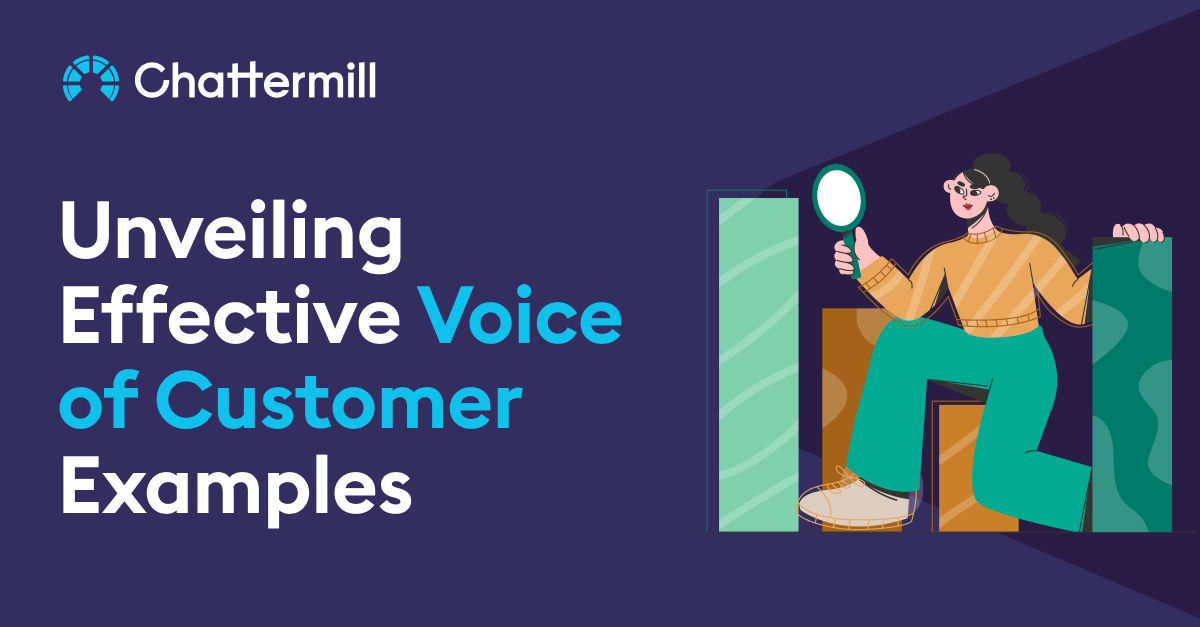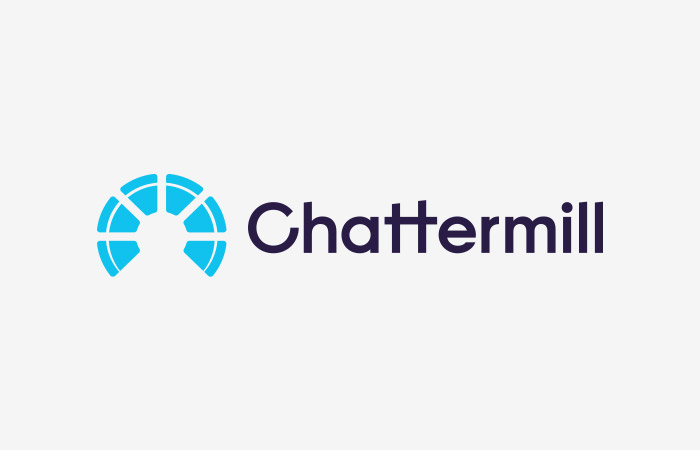Some of the world’s leading companies realise the powerful insights that can be gained from implementing Voice of the Customer methodologies. But with so many ways to gather customer data, where should you start?
Here, we’ll explore the leading Voice of the Customer methodologies and show how they’ve been used successfully by some of the biggest global brands.
Voice of the Customer methodologies
Put simply, the Voice of the Customer methodology is the way businesses collect customer feedback about their brand, products and services. Effective VoC methodologies to use to discover more about your customers include:
- Customer surveys
- Online reviews
- Phone or in person customer interviews
- Focus groups
- Chatbots
- Recorded calls
- Website data
- Email feedback
- Social media listening
- User testing.
How to choose your VoC methodology
First, you need to decide the problem that you want to solve or question that you need to be answered. Understanding customer needs, levels of customer satisfaction and pain points with their customer experience gives you the knowledge to implement improvements. Once you know the issue, you can embark on fixing it.
Example questions:
Why did our Net Promoter Score (NPS) fall year on year?
How can we attract more new customers to our website?
Would you recommend our brand and why?
What’s the customer sentiment towards our new product and its pricing?
How can we boost customer loyalty/ customer retention and reduce churn?
What’s the feedback on customer experience with our support team?
Next, you need to establish an objective. That could be benchmarking current performance or improving a particular business function, product or service.
- Benchmarking current performance: you could run a Voice of the Customer program to establish where you are now and use that as a benchmark for future. This kind of objective means tracking the same question at regular intervals (eg customer sentiment)
- Improving a business function/ product/ service: you can use VoC strategies [insert link to VoC strategy blog] to understand customers’ needs and make improvements internally to meet their customer expectations better.
Establishing your question and objective will make it easier to choose the most appropriate VoC methodology. For example, if you want to look into the customer experience with a particular team, you could send out customer survey questions to the customer base who have interacted with that department. Be sure to ask the right questions to gain the most valuable VoC feedback.
If your ecommerce team need better customer insights into behavior on your website, you can use data analytics to set benchmarks and track appropriate metrics (eg page visits and time spent on site). Follow up on any changes in performance to understand why.
Real life Voice of the Customer examples
Cox’s call center sentiments
Telecoms company Cox Communications made VoC a central function of its business operations. They collected customer data from touchpoints including call centers to hear directly from their customer base. This information provided them with a deep understanding of customer feelings (the personal dialogue provided in-depth feedback in comparison with online surveys and ratings). Armed with this knowledge, Cox was able to decrease customer churn, improve NPS and identify key customer experience trends.
YouTube's Quick Ratings
YouTube randomly ask people to rate the videos that they’ve watched. Simply asking the viewer to select a star rating between 1 and 5, does not deter from the user experience, yet provides YouTube with useful sentiment analysis. YouTube can use this customer data to analyse their content, algorithms and user preferences. Quick Ratings provide an easy way to gain customer feedback. The relatively simple tool is easily scalable too.
Walmart's incentivized customer surveys
Walmart recognized a need to improve its customer relationships and brand reputation. The CEO set the objective of becoming more customer-centric and listening to the voice of the customer to inform decision-making. Walmart chose customer surveys as the most appropriate VoC methodology. In order to gain a good survey response rate, an incentive of the chance to win a $1,000 gift card was offered to respondents. Customers were asked to rank their experience from 1 to 10 in various categories. Over time, VoC analytics could gauge the progress each store made.
Open AI’s in-built feedback loops
Although in relative early stages, AI language technology (like Chat GPT and Google Bard) incorporate feedback loops into their products. For example, there’s the very simple tool of a ‘thumbs up’ or ‘thumbs down’ in response to the answer given (although it’s questionable how many users would bother to use this). The business can also track customer success via metrics. If a user has to ask a second question it indicates that the first response wasn’t fully satisfactory. This customer data can be used to improve the product and service.
Schweppes real-time experience tracking
Schweppes used real-time experience tracking to monitor a series of advertisements. Quickly, stakeholders could gather feedback and see which ad was most successful. The business responded agilely by switching more of their resources to that particular ad. The result was a significant increase in sales and growth in customer engagement.
Slack's feedback evolution
Slack employed a VoC program to listen to its customers during product development. According to Slack CEO, Stuart Butterfield, “When key users told us something wasn't working, we fixed it—immediately.” Customer feedback is a key factor for prioritising workflows and setting the product roadmap. For example, customer feedback showed a desire for better integration with other apps, so this became a priority for Slack. By gathering customer feedback at this early stage, they can detect customer pain points before the product even launches.
Netflix's rating system
Have you even given a Netflix show a quick ‘thumbs up’ or ‘thumbs down’? It’s a simple review system for positive/ negative customer research. However, a previous iteration of this system used the 5 star rating system. By analysing VoC data, Netflix could see that the star rating system didn’t sit well with their customers. They associated the start rating system with customer satisfaction levels rather than like/dislike. Changing to the simpler thumbs up/down system increased survey responses by 200%. And Netflix has ‘always on’ market research to show customer sentiment towards its content.
DoorDash's in-app reviews
DoorDash prioritized time-saving initiatives for customers and decided to optimize their app to include customer reviews. This user-friendly in-app reviewing system enabled quick and convenient Voice of the Customer feedback. This smart integration improved the online customer journey. Users no longer had to leave one app to give customer feedback on another platform such as social media; everything the customer needed to do was in one place.
Uber's dual audience feedback
Uber also uses in-app feedback. The point of difference for Uber is that they have two distinct target markets - drivers and passengers - and they solicit feedback from both. The passengers give a rating after each journey, as do the drivers. These VoC surveys are transparent and fair for both parties. The ratings affect the passenger/ driver’s online reputation too as a passenger may reject a driver with a low rating and vice versa.
Amazon's personalisation
Amazon is an authority on using website data to inform decision-making. The online retailer makes use of customer behavior data to understand what each customer wants and likes. Whether that customer looks at a product, buys it or just adds to the cart, Amazon will use that customer data to recommend that product (or another one like it) to them next time they visit. This drives a vast number of sales for Amazon each year.
Why VoC methodologies matter
Forward thinking businesses who want to make customer-centric decisions really benefit from implementing VoC programs. The programs help you to understanding your customer demographics, their preferences and motivations. This knowledge is powerful.
To gain the most useful customer insights, you need to choose your VoC methodology carefully. If you want to learn more about customers’ feelings towards your service for example, choose a customer survey with open ended questions to allow them to share their in-depth thoughts. Learn from the super successful business Amazon and use online customer data to your advantage. Or gather online reviews on your own platforms to garner feedback transparently.
The experts at Chattermill can help you to determine the best Voc methodologies to achieve your business aims. Contact us today to find out more.






.jpg)
